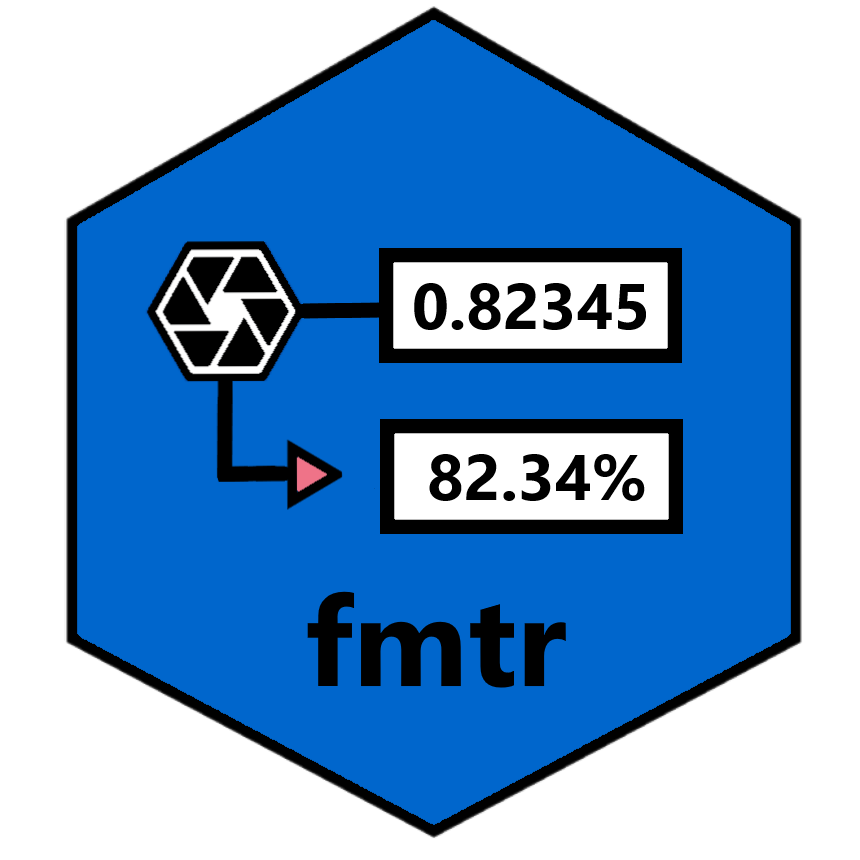
The hardware and bandwidth for this mirror is donated by dogado GmbH, the Webhosting and Full Service-Cloud Provider. Check out our Wordpress Tutorial.
If you wish to report a bug, or if you are interested in having us mirror your free-software or open-source project, please feel free to contact us at mirror[@]dogado.de.

R has a variety of ways to format data. There are functions for formatting dates, several functions to format numbers, plus you can always do a lookup with a named vector, or write your own vectorized function. Yet there are several problems with the way R handles formatting.
One problem is that there are too many formatting functions. It is not easy to remember which functions do what, and the differences between them. One goal of the fmtr package is to consolidate R’s formatting capabilities into a smaller number of functions.
Another problem is when you want to reuse a format. While there are many ways to format data, there is no mechanism to save a format and reuse it later. Therefore, another goal of the fmtr package is to promote format reuse.
A third problem is when you have a complex format that can only be accomplished with multiple formatting functions. It would be nice to have a way to keep these multiple formats together, and assign them all at once.
Finally, there are some formatting activities that are so common, it seems like there should be a function for it. The fmtr package also contains several functions that fall into this category.
The fmtr package was developed to address the above problems. The package addresses those problems in the following ways:
Two formatting functions: With
fmtr, all formatting has been consolidated into two
formatting functions: fapply() and fdata().
fapply() applies a format to a vector. fdata()
applies formats to a data frame or tibble. The implementation of the
fapply() function is reminiscent of a SAS® put
function.
The format catalog: The fmtr package also introduces the concept of a format catalog to R. A format catalog is a collection of formats that can be saved as a file, shared, and reused. This concept was taken directly from SAS® software.
User-defined format: The fmtr package also improves on the native R formatting capabilities by introducing the concept of a user-defined format. A user-defined format is an expression-driven lookup. You can define a set of logical expressions that, when true, will return a corresponding lookup value. The implementation of the user-defined format is similar to a SAS® user-defined format.
The formatting list: For complicated formats that require more than one function, the fmtr package also introduces the concept of a formatting list. A formatting list can perform operations that are difficult to accomplish otherwise.
Helper and Convenience functions: Finally, the fmtr package contains a set of functions to help you with common formatting tasks. For instance, it has functions to assist in assigning formatting attributes to an entire data frame. It also has some ready-made functions to perform very common types of statistical formatting.
All together, the above capabilities make formatting with the fmtr package both simpler and more powerful. The reuse features also make R more suitable to team programming.
For additional reading, examples, and a complete function reference, refer to the fmtr documentation site here.
To install the fmtr package, you may do so by running the following command from your R console:
install.packages("fmtr")Then put the following line at the top of your script:
library(fmtr)The fmtr package will then be loaded, and available for use in your project.
For examples and usage information, please visit the fmtr documentation site here. These examples will demonstrate the extraordinary usefulness of the formatting functions, and give you many ideas on how and where to use the fmtr package.
If you need help with the fmtr package, the best place to turn to is the fmtr web site. This web site offers many examples, and full documentation on every function.
If you want to look at the code for the fmtr package, visit the github page here.
If you encounter a bug or have a feature request, please submit your issue here
The fmtr package is part of the sassy meta-package. The sassy meta-package includes several packages that help make R easier for SAS® programmers. You can read more about the sassy package here.
These binaries (installable software) and packages are in development.
They may not be fully stable and should be used with caution. We make no claims about them.
Health stats visible at Monitor.